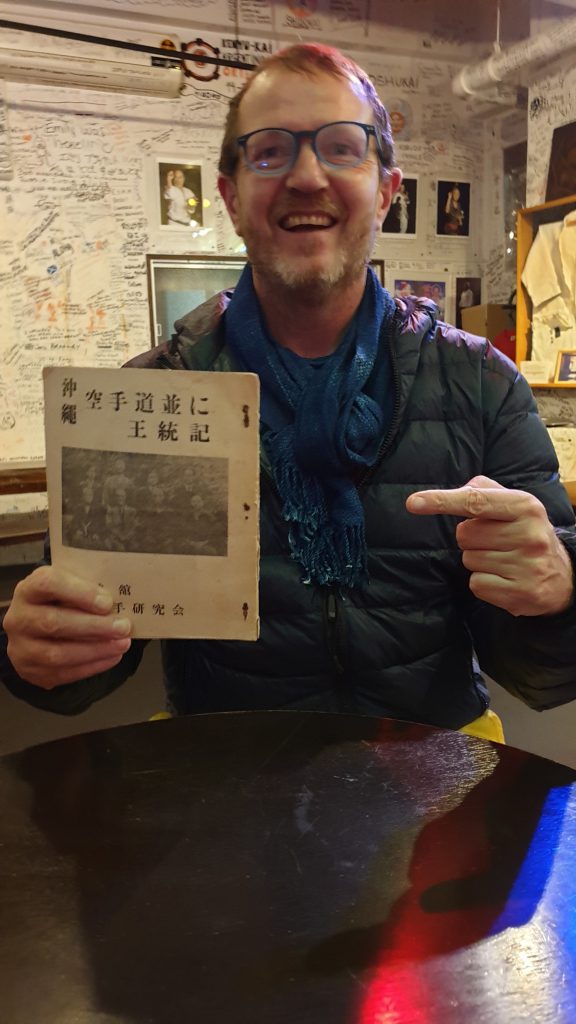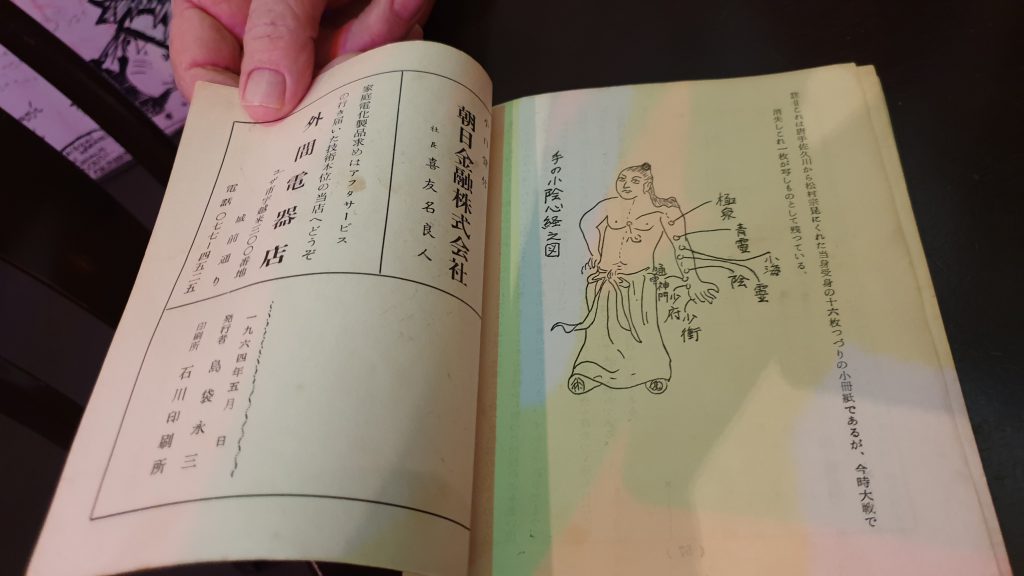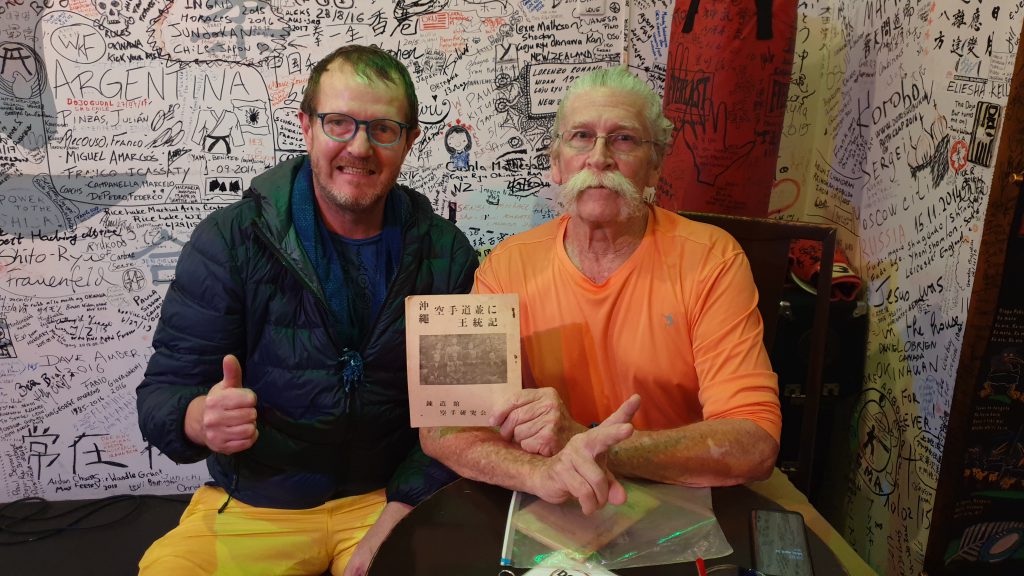A few years back Patrick McCarthy and Tuttle were planning to publish a new edition of the “Bubishi.” At that time, I had been asked if I’d like to contribute a little extra info, which I gladly did. My article is found in the 2016 edition of the Bubishi, on pages 67–111. In this contribution, most of what I had come across in the year-long preceding research was well based in primary sources which I owned myself or had otherwise been given access to. But there was one short source I wasn’t able to locate and check. And it was particularly interesting.
It is the following citation of Miyagi Tokumasa:
On the last page of Shimabukuro Eizō’s “Records of Okinawa Karate-dō and the Royal Dynasty,” one single sheet of illustration appeared as a fragment of the Bubishi or otherwise martial arts related document. […] The description says that the sheet is one from among a total of sixteen originally bound sheets showing atemi (striking vulnerable points on the human body) and ukemi (receiving strikes with one’s body) illustrations that were presented from Tōdī Sakugawa to Matsumura Sōkon (destroyed by fire during the Battle of Okinawa). Although it is still not confirmed whether this is true or not, it is tentatively accepted.
Tokashiki 1995 (leaf 5-6, unnumbered pages)

From: Miyagi Tokumasa: Karate no Rekishi.
Well, this appears to be the one single source where the theory of a personal tradition from Sakugawa to Matsumura originates in. And this is why it is extremely important for Okinawa Karate as a whole. As you can probably imagine, I’ve tried to get my hands on the mentioned publication, and although I have been a professional antiquarian for 20+ years or so, it was in vain at that time. So I had no means to check the veracity of above statement.
Luckily, I happened to befriend with John Lohde sensei, a seasoned karate kobudō man who calls Okinawa his second home and who also happened to be a long time student of Shimabukuro Eizō, the author of the book in question. And so I happened to receive a copy of the page in question. It was so exciting. Here is the illustration:
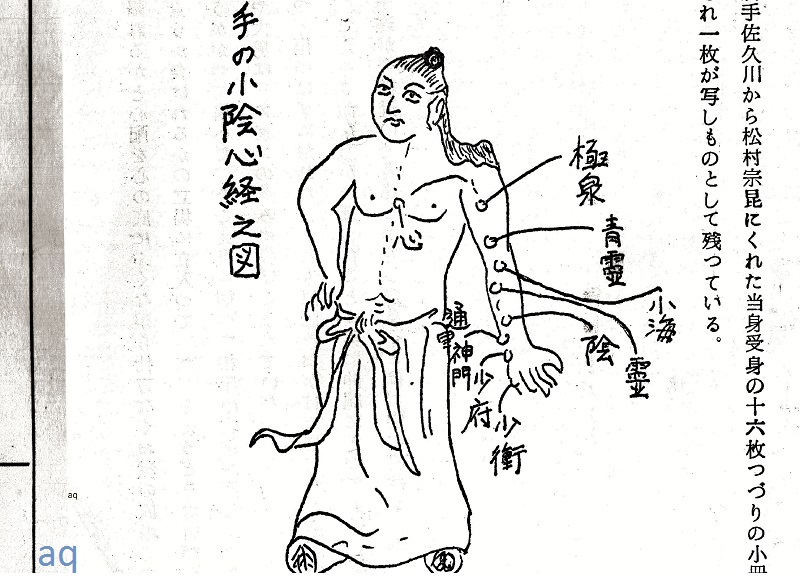
There was some disenchantment but I will make it short:
- This is not an atemi chart, but a chart of the acupuncture points of the heart meridian.
- The illustration is a hand drawn and hand labeled copy of a widespread original acupuncture chart.
- The characters are not Chinese, but Japanese.
- The characters are not from the time of Sakugawa or Matsumura, i.e. not from the 18-19th century.
Sakugawa’s life dates are ambiguous. However, he is said to have lived during the 18th to the 19th century. During that time, there is basically no way that he or anyone else used the simplified form of characters called Shinjitai, i.e. simplified forms of kanji that have only been used in Japan since a reform in 1946. There are several of these characters used: 図 vs 圖, 霊 vs 靈, and 経 vs 經. This means that the illustration was created in the postwar era.
If you Google picture search the illustration’s headline, you get about this:
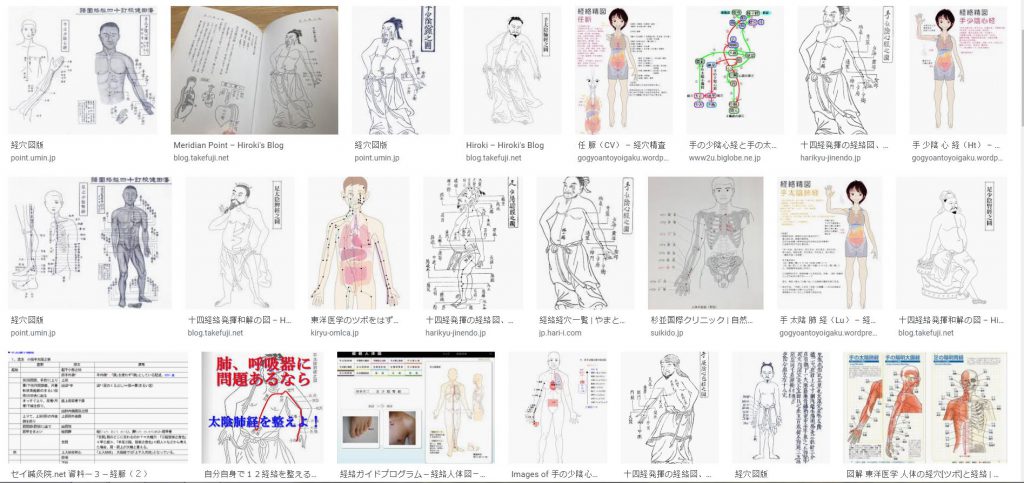
This is because the illustration’s headline reads “Te no Shōin Shinkei no Zu” (手の小陰心経之図). This is nothing but the “Illustration of the Arm’s Minor Yin Heart Meridian,” abbreviated in TCM as HT.
Besides, the handwritten labels of the points are as follows, and they are exactly the acupuncture points of the “Arm’s Minor Yin Heart Meridian”:
| Characters | Abbreviation | Japanese |
| 極泉 | HT1 | Kyokusen |
| 青霊 | HT2 | Seirei |
| 小海(少海) | HT3 | Shōkai |
| 霊道 | HT4 | Reidō |
| 通里 | HT5 | Tsūri |
| 陰郄 | HT6 | Ingeki |
| 神門 | HT7 | Shinmon |
| 少府 | HT8 | Shōfu |
| 少衝 | HT9 | Shōsho |
In other words, this source can not be used as an evidence for a personal combative tradition from Sakugawa to Matsumura and further to the postwar era. Moreover, it is an example of the liberty and inventiveness of storytelling, building rapport, appeal to authority etc.pp. that we often find Westerners be so receptive of when it comes to Okinawa.
Biblio:
- Shimabukuro Eizo: Records of Okinawa Karate-dō and the Royal Dynasty. 1964.
- Miyagi Tokumasa: Karate no Rekishi.
- Patrick McCarthy: Bubishi. Tuttle 2016.
© 2019, Andreas Quast. All rights reserved.

